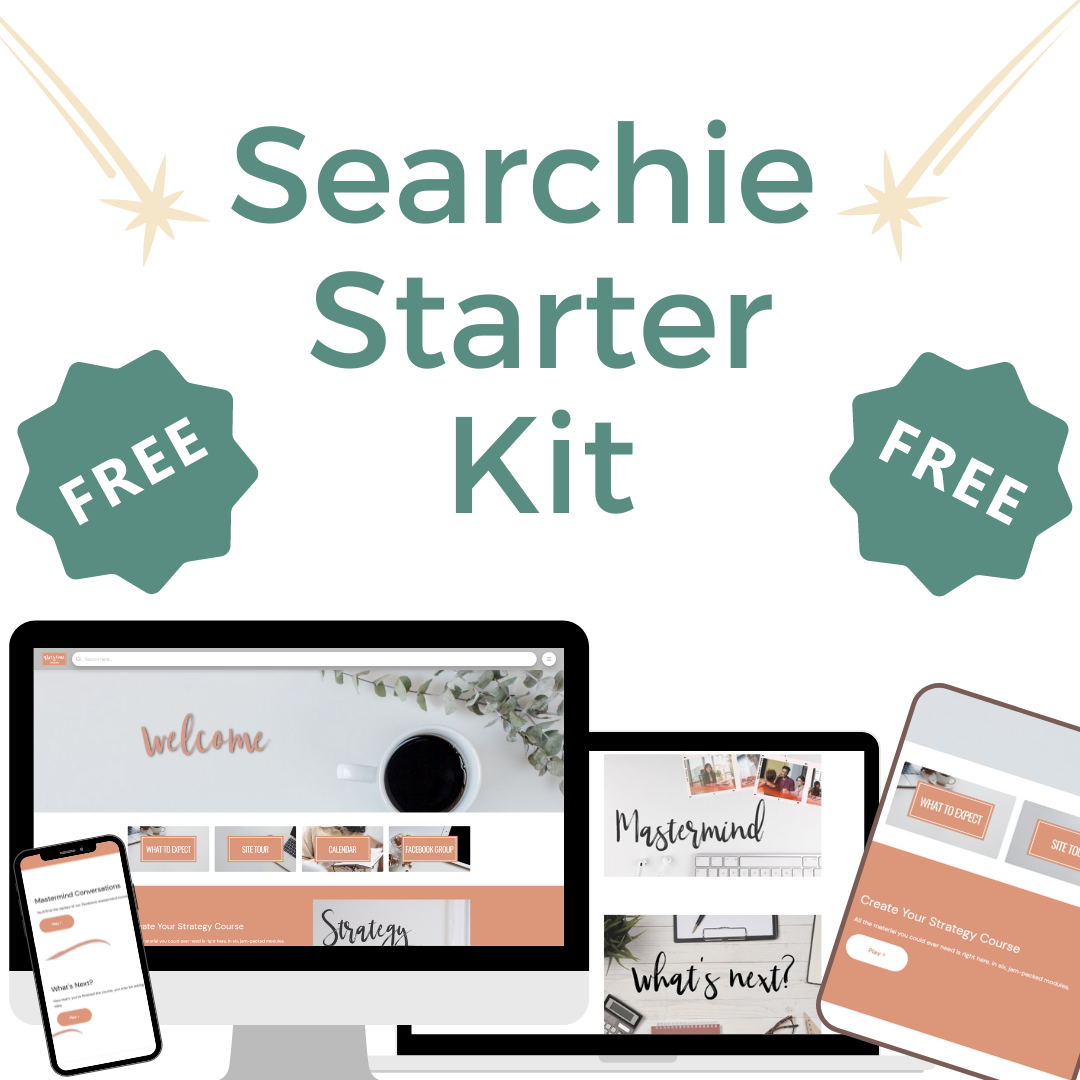A Great Searchie Hub Starts with a Great Plan
If you were a house stager who furnished and decorated entire homes at once, you wouldn’t start randomly grabbing pieces of furniture and art and tossing them onto the truck. You’d create an organized, cohesive plan for the home as a whole and each room in particular. Then you’d load the truck.
Guess what? The Searchie Hub you’re planning is like an unfurnished house, and you want to make it so visitors feel welcome, discover what they’re looking for, and move about easily as they explore.
Time Spent Planning is Time Well Spent
You may feel excited and ready to create your Hub. I often suggest just getting started in Searchie—just taking those first few steps. But if you can take the time for this really important planning step, take it! I recommend that you go analog and grab a pad and paper and some Post-it notes.
Give some deep thought about all the components your Hub will need, from the major content like a course or membership to the boring details like your privacy policy. Make an exhaustive list. Think about what you want your clients, students, or members to know. Also, ask yourself, what is it they most want to know? It may be different! Find overlap. Then, prioritize.
Map Out Your Searchie Hub
Next, you’re going to make a Hub map, which is like making a website map. What are the elements that will be on the main landing page? Draw a box or add a Post-it and write that element on there. I like using pencil or Post-its because there are a lot of changes made during this process. For example, when it appears that one page of the Hub is getting too cluttered, you can easily move the Post-it or erase an element as you assign it a new linked page.
Plan on Using Tags
Let’s say you want to have both free and paid content in your Searchie Hub, such as free resources, a blog, and then a membership or paid courses. You can plan for this by assigning audience tags to the different types of content.
For example, you can assign a tag for all visitors and then assign that to all free content. When a visitor pays for a course, they receive an additional tag that allows them to see the paid content they’ve selected. What happens when a nonpaying visitor tries to access that content? They will see a sales page for that content (yet another item to create in your Hub mapping process).
Spend Time Planning Now and then Build Your Hub
The Hub planning and mapping stage is time-consuming and a lot of thought work. The good news is, it makes it easier and faster to implement your Hub when you’re ready for the building stage. Why? Because all of the decisions have already been made.
I’m thinking about offering a Searchie Site Map Success Workshop for $27 where I’ll guide you and a small group of other entrepreneurs over Zoom as you create a Hub map that will lead to the Hub of your dreams. There’s something special about Hub planning this way—it’s like we’re locking ourselves into a war room and we’re not leaving until it’s done. I’ll be leading you and answering your questions based on my experience with scores of Hubs.
Let’s Create Your Hub!
If you feel stuck or overwhelmed with Searchie, let’s talk. I create Hubs for my clients in a flash.
Top Past Blog Posts
Get Your Searchie Hub Up!
This is really all you need to get started! Personalize your Searchie Hub with a few easy clicks. These clean, fresh, professionally designed Canva templates work right in Searchie. All you need to do is add your own images.
*Some of these links are affiliate links, which means I may get a commission if you purchase. However, none of the fees of these resources have been increased to compensate me. When possible, if special discounts are provided to me, I extend them to you!











Thinking about moving your courses or memberships to a new platform? Membership.io (formerly Searchie Hubs) is built for creators who want a smarter, smoother way to deliver content. Unlike all-in-one tools that try to do everything, Membership.io focuses on what matters most: an easy, engaging, searchable experience your members will love. With drag-and-drop setup, AI-powered search, personalized learning paths, and seamless integrations, it helps you scale without the tech headaches. If you’re ready to cut churn, boost retention, and finally make your platform work as hard as you do—this might be your “shell, yes!” moment.